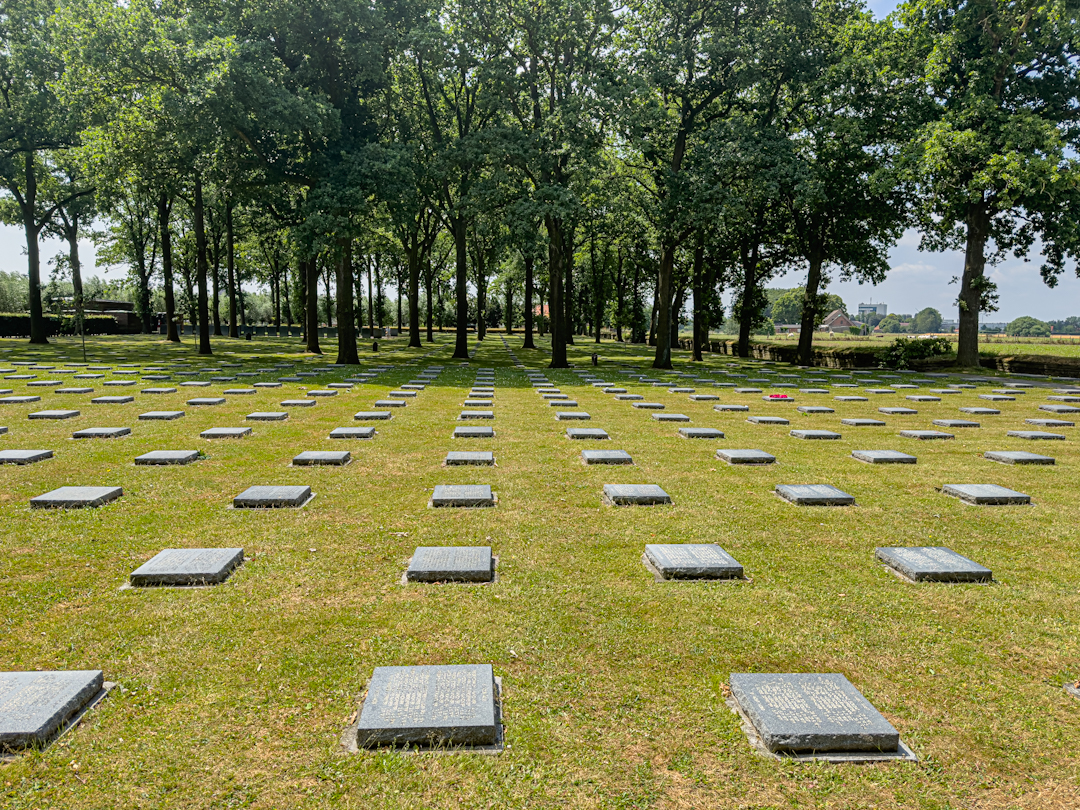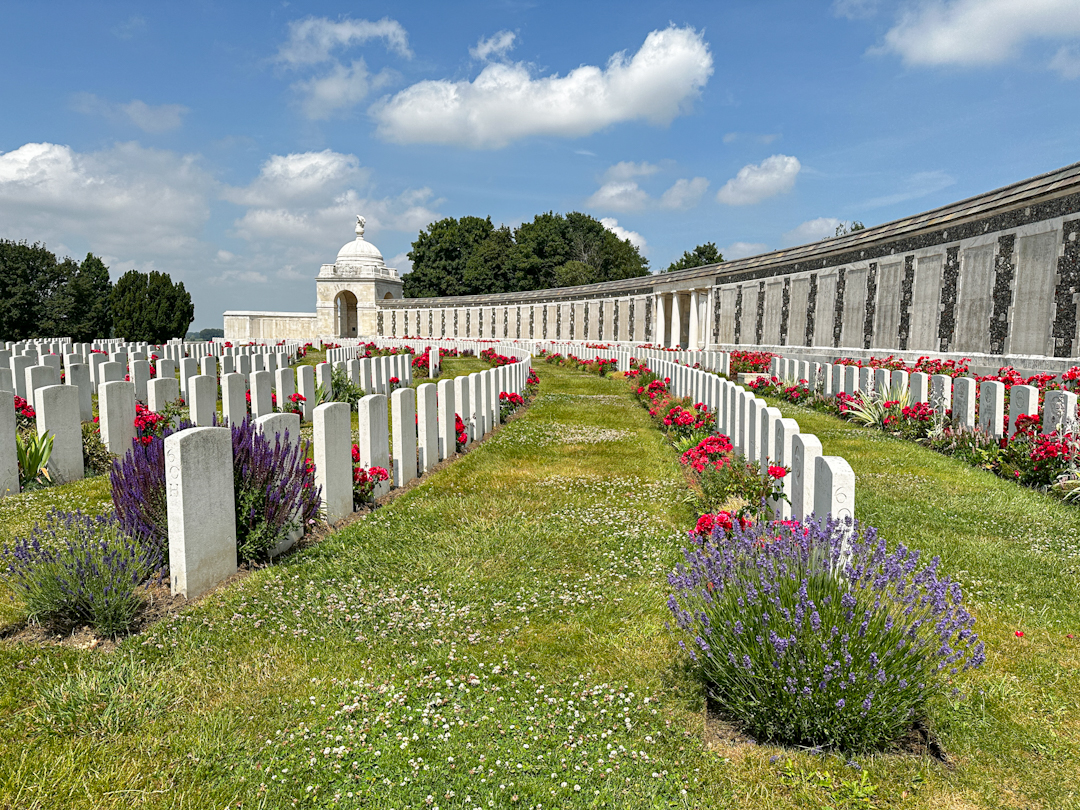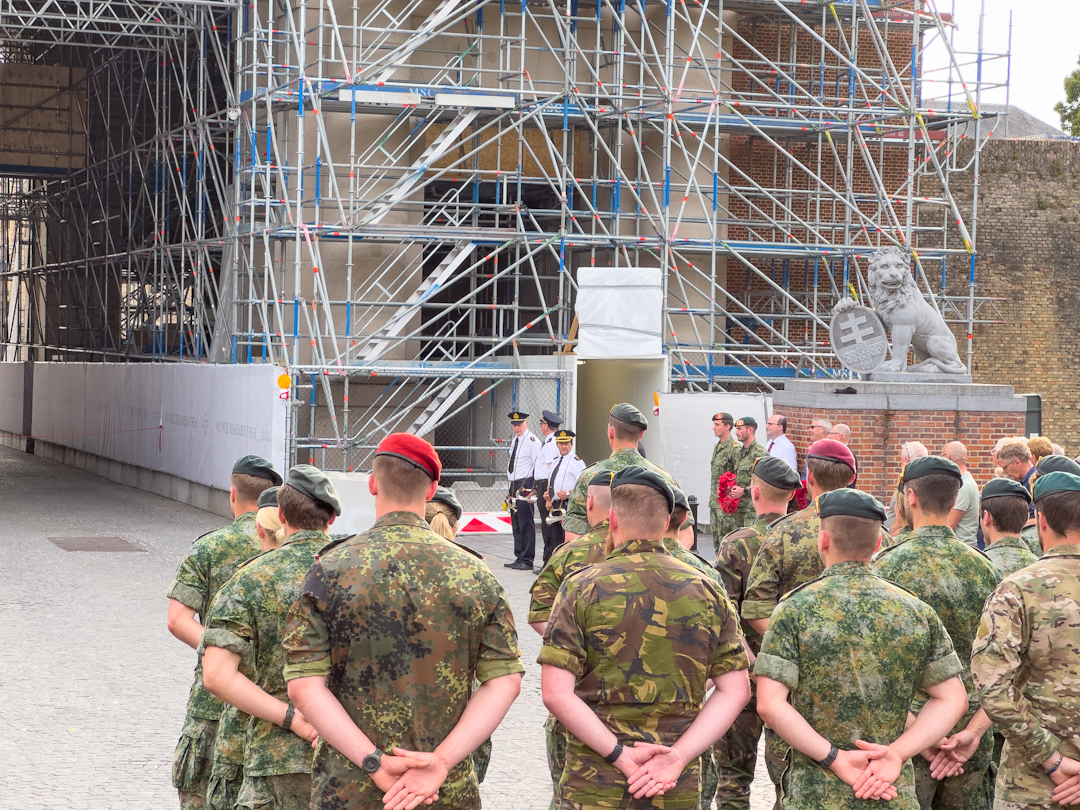Monday 19th June
Today I went on a tour of the Ypres Salient with Ypres Battlefield Tours. There were five of us in the group and the other four were a couple from New York and two German women from Frankfurt.
As a quick summary the Ypres Salient was a section of the front lines during the First World War, once the initial war had bogged down into trench warfare. It’s called the Ypres Salient because it was a section of trenches where the British lines bulged into the German lines with Ypres in the centre of the bulge.
There is, by historians, said to be five battles of Ypres, but essentially these were a series of attacks by one side agains the other which over the course of four years just moved the front line a maximum of four miles, backwards and forwards. What the British know as Passchendaele was the third of these battles. The extent of the battlefield was 25 miles by four miles and in this small area over half a million men died and countless other were injured.
Our guide, Roger Steward, was extremely knowledgeable and has written two books on different aspects of these battles.
He first took us to a place called Hill 62 to show us an overview of the area and the importance to the armies of holding the high ground. The highest points around Ypres are no more than 100 metres but we could see from Hill 62 that this gives people on the hills a view of everything for miles around.
Later we went to a battlefield dressing station which, at one point in the war, had over 7000 casualties in 4 days, with only 10 doctors to deal with the injured. It was also whilst working as a Doctor at this dressing station that Canadian medic John McCrae wrote the poem “On Flanders Field”, which led to the poppy being the symbol of the war. The first verse reads:
In Flanders’ fields the poppies blow
Between the crosses, row on row,
That mark our place: and in the sky
The larks, still bravely singing, fly
Scarce heard amid the guns below.
We then moved on to a recently excavated section of trench where we got a small glimpse of cramped and claustrophobic conditions endured by the soldiers of both sides.

Our penultimate stop was the German Cemetery of Langemark. It was on this Cemetery that our guide wrote one of this books. He told us that during the Second World War the Nazis made this cemetery a symbol of nationalism. The names of far right Youth Groups were inscribed on stone blocks at one end and some reason these have never been removed. It was also adorned with Swastika flags and Hitler even once made a visit to see site. 45,000 Germans are now buried in this one cemetery.

In was interesting to speak to the Germans about the First World War, because they said it was something that was not studied in German schools and, unlike the Second World War, it is something about which the the population is almost unaware.
Our final stop was the famous Tyne Cot which is the largest Commonwealth War Cemetery in the world. It contains 14,000 graves plus inscriptions of 34,000 names of soldiers whose remains have never been found.

I have been to many Commonwealth War Graves and Tyne Cot is the most moving, simply because of its size and the beauty of its construction and layout.
On my return I found that while I had been out, Sarah and Skye had been into Ypres and unfortunately Sarah had tripped on a raised cobble stone. To stop herself falling she grabbed at an adjacent stone window sill and while it stopped her from falling it had also damaged her fingers.
Her fingers were bruised and swollen and went backwards and forwards in our discussion as to what to do and eventually decided to go to Ypres hospital. After a long walk to A&E the Belgium health system was fast and efficient. Sarah had an X-Ray, which showed she had fractures at the base of two of her middle fingers. After the X-Ray she was seen by a doctor and had her two fingers bound together by a nurse. She was in and out in 30 minutes. She had nothing to pay but I understand Belgians’ have to pay a percentage of hospital and medical charges, which varies according to income.

We caught a bus back into Ypres and found we we had an hour to wait for the Last Post Ceremony. In a Belgian town with an hour to kill what else can you do but have a couple of beers. We found an excellent bar with 23 different beers on tap and sampled a couple of not too strong ones. As I have found in the past it is all too easy to drink too much when quite a few Belgian beers are 10 or 11% alcohol!
We made our way to the Menin Gate 15 minutes before the ceremony. The Menin Gate is a large arch within which are inscribed the names of 54,000 British and Commonwealth Soldiers from the First World War which have never been found. I found out on my morning tour that the builders underestimated the number of missing and another 34,000 names had to be written on a wall at the Tyne Cot cemetery because the Menin Gate did not have enough space. The Menin Gate is currently under a two year renovation programme and is covered in scaffolding.
There was an amazingly large crowd of perhaps 200 people for the ceremony which has taken place every day, except for the period when Germany occupied Belgium in the Second World War, since 1929.
Before the start a slightly motley platoon of Belgian soldiers paraded in front of the Gate and then stood to attention. I said motley because they wore several different camouflage uniforms. It could be that they were reservists or from different units, whatever was the case they did not look very smart.

The Ceremony itself consists of three Belgian buglers, dressed traditionally in Belgian firefighters uniform (I’ve got not idea why), who march in front of the Menin Gate and play the Last Post. The Last Post is normally played at the end of a soldier’s day, but also at funerals. It is very moving, but rather humorously, Skye, who had been lying down, immediately sprang up as the first note sounded, looked intently at the buglers, and her ears swivelled around trying to make sense of it all.

Following the Last Post a British veteran read a famous verse from the Robert Binyon poem:
“They shall grow not old, as we that are left grow old:
Age shall not weary them, nor the years condemn.
At the going down of the sun and in the morning
We will remember them.”
Wreaths and then laid and finally the buglers play Reveille, which is a bugle call traditionally played to wake soldiers up.
With the ceremony complete Sarah and I had a very average meal in Ypres.
Tuesday 21st June
This was essentially the end of this trip. We drove the short distance from Ypres to a campsite near Autingues in Northern France (50.8372, 1.9753 €19 with ACSI) stopping on the way to get Skye wormed at a local vet, which is needed to return to the UK.
We’ve stayed at Camping St. Louis previously because it both has a vet nearby and is only 30 minutes from the Channel Tunnel. It’s a lovely little site. Very green and with good separation of the pitches. There is a large dog play area for Skye and she has already played plenty of frisbee. In the play area are a couple of jumps and Sarah has been training Skye to jump over them on command.
Tomorrow we will return to the UK and spend two days with Sarah’s sister on the South Coast before returning home on Sunday.
In all its been a great trip. Sicily is well worth visiting and we always enjoy our trips through Germany and the rest of Italy where there is so much to see. We were also very impressed with our short stop in the Netherlands and will definitely be exploring it more in the future.
